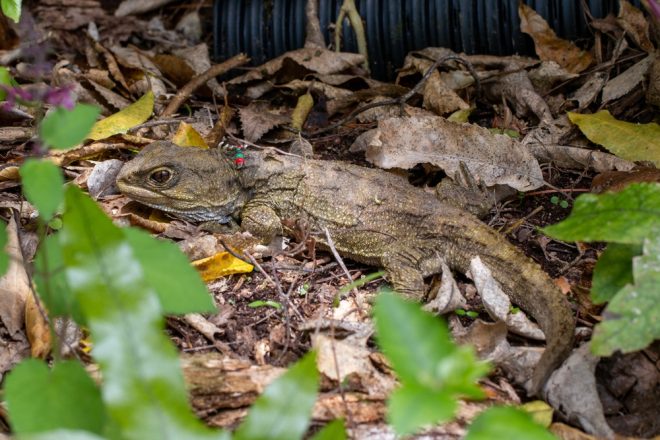이 기사는 뉴스 매체 ‘The Conversation’에 기고된 글이며, 올해 초 뉴질랜드 보호구역 워크숍에서 Iwi(마오리 부족)와 보존을 주제로 한 발표를 바탕으로 작성됐다.
전세계 지도자들은 글래스고에서 열린 COP26 기후정상회의 협상을 계속해왔다. 지금까지 이루어진 여러 합의들에서 우리는 기후 변화와 세계적인 생물 다양성 손실 사이의 연관성을 인정했다.
우리 뉴질랜드는 이들과 지구 반바퀴 떨어져 우두커니 바라만 보고 있는지도 모른다. Aotearoa New Zealand의 거의 1/3이 보호구역으로 지정돼 있지만, 뉴질랜드는 또한 범지구적으로 가장 많은 멸종위기종을 보유하고 있기도 하다. 조류, 박쥐, 파충류, 개구리의 79% 가 멸종 위기에 처해 있다.
야생동물에 대한 이러한 위협은 전적으로 인간의 영향 때문인데, 여기에는 토착 생물 다양성을 위협하는 포유류 포식자의 도입과 토지 이용 관행이 포함된다. 전국 600여개 지역사회 보호단체에서 4만명 이상이 활동하고 있음에도 불구하고 이러한 노력과 이득은 미미한 수준이어서 생물다양성 감소를 막지 못하고 있다. 연구에 따르면 뉴질랜드 사람들은 환경의 심각성에 대해 점점 더 깊이 인지하고 있지만, 이러한 지식이 행동으로 이어지지는 않고 있다. 따라서 자연 세계를 이해하는 전통적 인식관인 Mātauranga Māori가 사람들을 인식에서 행동으로 옮기는데 도움을 줄 수 있음을 여기서 설명코자 한다.
Te Mana o te Taiao는 뉴질랜드의 국가 생물 다양성 전략이며, 향후 30년 동안 최우선 순위로 보존을 두고 있다. 또한 서양 과학과 Mātauranga Māori의 조율을 촉진하고 환경과 사람 모두에 초점을 맞춘다.
정기적 조사를 통해 뉴질랜드의 환경에 대한 대중의 인식의 현저한 변화를 보여준다. 일례로 20년 전에는 대다수가 자연 환경이 우리의 건강에 도움이 된다고 믿었지만, 오늘날에는 대부분의 사람들이 환경이 우리 건강에 좋지 않은 영향을 미친다고 믿는다. 또한 응답자들에게 환경 옹호나 봉사활동에 참여했는지를 조사하는 항목을 살펴보면, 20년 넘게 꾸준히 행동해온 사람들의 비율은 유지되고 온 것으로 나타났다.
인식에서 실천으로
사람들은 다음과 같은 몇 가지 주요 이유로 인해 자연 세계와 점점 더 단절감을 느끼는 것으로 파악됐다:
- 개인주의의 상승과 공동체의 붕괴
- 기술과 즐거움 추구
- 도시화와 불평등의 증가로 인한 “경험의 멸종”
- 자연과 연결될 기회가 적은 가난한 도시민
인식이 곧바로 행동으로 이어지지는 않지만, 이 연구는 자연과 더 연결되어 있다고 느끼는 사람들이 더 강한 환경적 책임감을 갖는다는 것을 보여준다.
만약 우리가 우리의 토착 생물 다양성의 생존을 보장하고 싶다면, 우리는 어떻게 인식에서 행동까지 우리가 얻을 수 있는지 물어볼 필요가 있다. 원주민들은 수세기에 걸쳐 생물 다양성을 보존하는 데 중요한 역할을 해왔고, 따라서 Mātauranga Māori는 이에 대한 몇 가지 해답을 가지고 있는 것으로 보인다. 특히 우리의 지식을 실천으로 바꾸는 방법으로 아래의 세 가지 측면에서 생각해볼 수 있다.
- 생태과학은 생태계의 상호연결성에 대한 이해를 높였고, 이는 자연 세계와 인간관계에 대한 Mātauranga Māori 개념에 더 가까운 것임을 보여줬다. 이 개념에 따르면 자연이 건강하지 않으면 사람들도 건강해질 수 없다. 인간 세계와 자연 세계는 서로 연결돼 있으며 이 둘을 상호 의존적인 존재로 볼 줄 안다면 사람들로 하여금 자연 세계에 대한 관심을 더 불러 일으키게 된다.
- 가치와 믿음을 사실에 포함시킬 때, 지식은 더 기억에 남고 의미 있으며 공감할 수 있는 것이 된다. 이를 통해 사람들은 자신이 자연의 일부라는 의식을 가지게 되고 자연과의 연결고리도 가지게 된다. 만약 누군가 어떤 장소에 깊은 유대감을 느낀다면 그 사람은 그 특별한 장소에 훨씬 더 관심을 기울이고 보호할 가능성이 있다.
- 자연계에 대한 우리의 상호 연관성과 의존성에 대한 인식은 우리가 다른 종을 위협하는 책임과 관행 사이의 불협화음을 직시할 수 있도록 도와준다.
공동체 보존이 해답이다
지역사회 보호단체는 Mātauranga Māori 개념을 사용하여 뉴질랜드의 국가 생물 다양성 전략을 달성하는 데 중심적인 역할을 맡을 수 있다.

Zealandia와 같은 생태단체들은 이미 교육과 자원봉사를 통해 자연과 연결될 수 있는 기회를 제공하고 있다. 전국에 80개 이상의 보호구역이 있어 사람들이 자연에 익숙해지고 보존 활동에 참여할 수 있는 기회를 갖는다.
생태단체들은 환경복원은 가능할 뿐만 아니라 생태계 보존은 국가의 역할인 동시에 우리 모두의 책임이라는 것을 보여주고 있다. 또한 이들은 효과적으로 지역 사회 내에서 보존을 위한 기반을 구축하고자 한다.
Zealandia는 사람들이 자연 세계에 참여하는 방식을 변화시키는 원동력으로서의 그 역할을 하고 있다. 이들의 20년 전략은 Mātauranga Māori를 강조하고 열정을 공유함으로써 변화를 고무시킨다.
생물다양성 전략은 근본적으로 인간에 대한 것이다. 따라서 우리 앞에 놓인 과제는 근본적으로 사람들이 자연 세계를 소중히 여기는 방식을 바꾸는 것이기도 하다.
마오리 사람들은 마오리 세계관과 Tauiwi(서구) 세계관을 따로 또 같이 누빈다. 비(非) 마오리 사람들은 좀처럼 마오리 세계에 발을 들여놓지 않는데 아마도 그들만의 독특하고 생소한 문화가 낯설게 느껴지기 때문일 것이다.
단, Mātauranga Māori 개념과 우리의 자연관을 통합시킨다는 것은 마오리의 지식을 전용하거나 합법적인 마오리 사람들의 불만을 얼렁뚱땅 무마시키는 방편이 되서는 안 된다. 대신에 두 개의 세계관을 통합시킬 수 있다면 – 마치 쌍안경으로 세상을 보듯이 – 하나의 렌즈를 통해 세상을 보는 것보다 더 깊은 차원에서 다양한 사항들을 분별할 수 있게 될 것으로 기대해야 한다.
생물다양성을 유지하고 개선하기 위해서는 단순히 보호 구역 뿐만이 아닌 모든 곳에서 이를 위한 실천이 이뤄져야 한다. Mātauranga Māori 인식관을 수용하게 된다면 뉴질랜드만의 생태적 소속감과 정체성을 발전시켜 생물 다양성을 지키는 보호자(kaitiaki)로 거듭날 수 있을 것이다.





























































